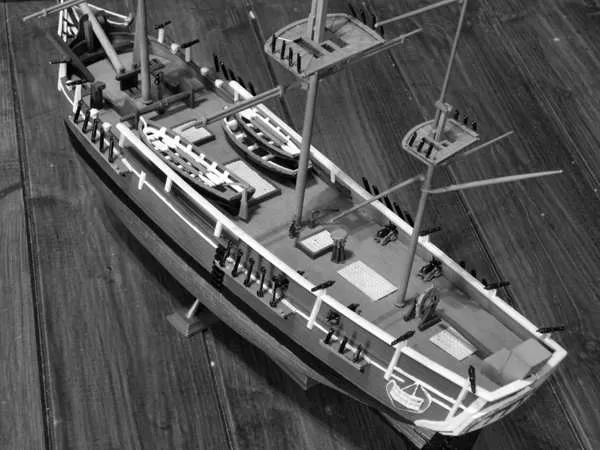In the late 18th century, a seemingly unremarkable coal-carrying vessel named Bethia was transformed into one of the most famous ships in naval history—the HMS Bounty. Built between 1783 and 1784 by Blaydes Shipbuilders on the River Hull, Bethia was originally designed as a sturdy, flat-bottomed, three-masted square-rigger. But her journey from a humble coal carrier to a key player in the infamous mutiny on the Bounty is a fascinating tale of maritime ingenuity and historical significance.
The Birth of Bethia: A Coal Carrier’s Humble Origins
Bethia was constructed with practicality in mind, measuring 69 feet 11 inches in length, 24 feet 4 inches in breadth, and 11 feet 4 inches in depth. Weighing 230 tons, she was built to navigate the often treacherous waters while carrying coal—a crucial resource during that era. Her relatively flat bottom allowed her to access shallow ports, making her ideal for transporting heavy loads. However, her destiny was far from being confined to the coal trade.
Sir Joseph Banks and the Search for a Special Vessel
In 1787, Bethia caught the eye of Sir Joseph Banks, a renowned naturalist and botanist, who had been commissioned by the Admiralty to find a vessel capable of transporting a precious cargo of breadfruit and mangosteen trees from Tahiti to the West Indies. The mission was part of an effort to provide an inexpensive food source for enslaved workers on Caribbean plantations. Banks needed a ship that was not only sturdy but also could be refitted to carry delicate plants over long distances.
After careful examination, Banks recommended the purchase of Bethia. Valued by her owners at £2,600, the Admiralty negotiated a purchase price of £1,920—a significant investment at the time. Once acquired, Bethia was moved to Deptford for extensive refitting, a process that would cost more than the purchase price itself.
The Transformation into HMS Bounty
The refitting of Bethia was a meticulous and costly endeavor. The ship underwent a complete overhaul to prepare her for the arduous voyage ahead. The total cost of the transformation, including rigging, stores, and hull modifications, came to £6,406—equivalent to over half a million pounds in today’s money.
One of the most significant changes was the copper sheathing of the hull. Originally planked against shipworms with horsehair and tar, Bethia’s hull was stripped, and the iron fittings were replaced with bronze to prevent galvanic corrosion when in contact with seawater. Copper sheathing was then applied, a practice that not only protected the timbers from marine organisms but also improved the ship’s speed and maneuverability. This innovation was so effective that the term “copper-bottomed” became synonymous with reliability and trustworthiness.
Ready for Voyage: A New Identity as HMS Bounty
With her transformation complete, Bethia was rechristened His Majesty’s Armed Vessel (HMAV) Bounty. Although she was not large enough to warrant a Post Captain, she was equipped with four four-pound cannons and ten half-pound swivel guns, making her a formidable vessel for her size.
The interior of the ship was also modified to accommodate the cargo of plants. A false deck with specially designed holes for 629 pots was constructed, along with lead-lined lower decks to conserve water and improve plant care. Skylights and air scuttles were installed to ensure the plants received adequate sunlight and ventilation during the long voyage.
In September 1787, Bounty was re-masted and equipped with five anchors, including two 13 cwt cast iron bower anchors and three smaller kedges. With a crew of 46 men—plus the addition of a “widow’s man,” a fictitious sailor used by the Royal Navy to ensure payments to families of lost crew members—Bounty was ready to set sail.
The Voyage Begins: Bounty Sets Sail for Tahiti
On December 23, 1787, under the command of Lieutenant William Bligh, the newly christened HMS Bounty departed from Spithead on the Solent, bound for Tahiti. The ship’s mission was clear, but the voyage would soon become anything but routine. The Bounty’s transformation from a coal carrier to a vessel of legend was complete, but her journey—and the mutiny that would make her infamous—was just beginning.

